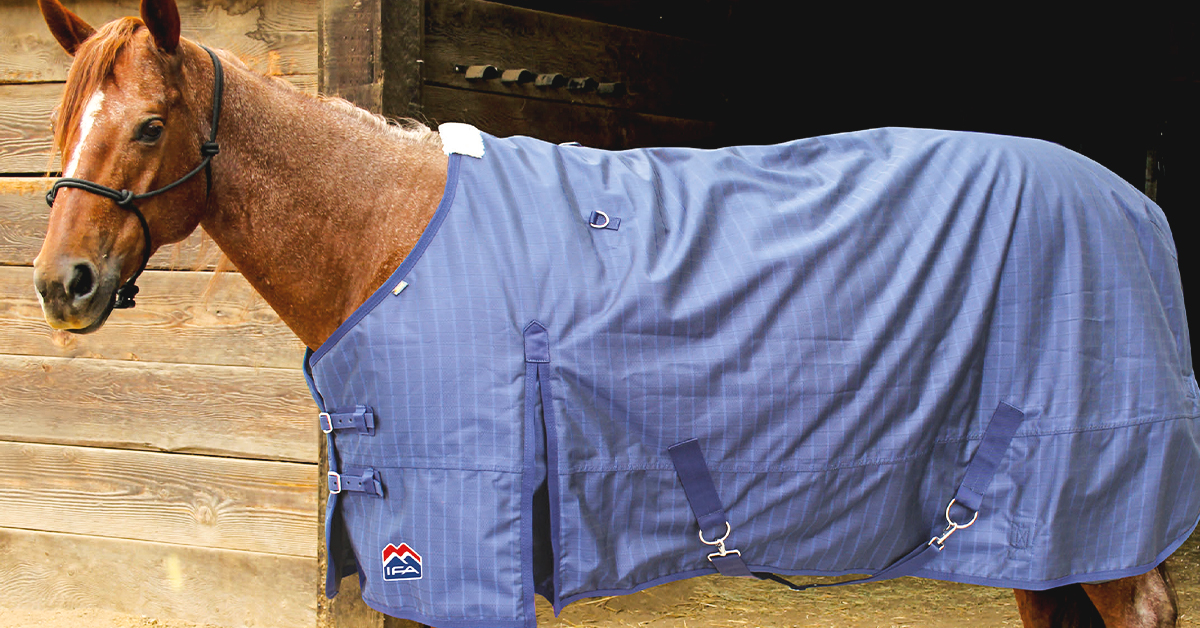
How to Repair a Waterproof Horse Blanket Efficiently?
Share
A waterproof horse blanket is more than just a piece of fabric; it is a protective shield for your horse against the elements. Unfortunately, wear and tear are part of life, and knowing how to repair a waterproof horse blanket can save you both money and time.
If you are a health-conscious pet owner who wants to ensure your horse remains comfortable and well-cared for, understanding how to maintain your horse's equipment, including their blanket, is crucial. In this article, we will delve into effective techniques for repairing a waterproof horse blanket, so your equine companion stays cozy and dry.

Understanding Waterproof Horse Blankets
Before diving into repairs, it's essential to understand what makes a horse blanket waterproof. Waterproof blankets are often made from specialized materials that keep water out while allowing moisture to escape from the inside. This balance is vital for maintaining your horse's comfort.
Types of Waterproof Horse Blankets
There are several types of waterproof horse blankets available:
- Stable Sheets: Great for keeping your horse warm without over-heating.
- Turnout Blankets: Ideal for outdoor use with durable materials.
- Coolers: Help wick away moisture, especially after workouts.
Common Issues with Horse Blankets
Damage can occur in various forms, leading to necessary repairs. Common issues include:
- Punctures and tears
- Seam separation
- Damaged straps and buckles
Basic Tools and Materials Needed for Repairs
Gather the following tools and materials before you begin:
- Heavy-duty sewing needle
- Strong thread or waterproof adhesive
- Patch materials
- Scissors
- Pins or clips
Step-by-Step Guide on How to Repair a Waterproof Horse Blanket
1. Assess the Damage
The first step is to thoroughly examine your blanket. Identify where the tears, rips, or other damage are located. Understanding the extent of the damage will guide your repair method.
2. Clean the Affected Area
Before doing any repairs, its important to clean the area. Use a gentle soap and water solution to remove dirt and debris from the fabric, allowing the repair materials to adhere better.
3. Preparing Your Repair Patch
For larger tears, you'll need a patch. Choose a piece of durable fabric similar to the blanket's material. Cut it into a size slightly larger than the damaged area and round the edges to prevent peeling.
4. Sewing the Tear or Attaching the Patch
If sewing, use a heavy-duty needle and thread. For adhesive patches, apply waterproof adhesive according to the package instructions. Ensure you cover the entire damaged area for a long-lasting repair.
5. Securing Loose Straps and Buckles
Inspect straps and buckles for damage. If they are frayed, consider replacing them or using needle and thread to fortify weak points.
6. Testing the Repair
Once you've completed the repairs, it's imperative to test your work. Lightly tug on the repaired areas to ensure they hold. You may want to leave the blanket to dry in a spacious area and test its waterproof quality.
Tips for Preventive Maintenance
To avoid future repairs, consider these maintenance tips:
- Regularly check your horse blanket for wear and tear.
- Store the blanket in a dry place to prevent mold and mildew.
- Use horse blanket clips or pins to keep it secure and properly positioned.
Resources for Further Learning
If you want to learn more about horse blankets, you can check out resources like Blanket Rule and Waterproofing Guide.

Frequently Asked Questions
What materials are best for patching a horse blanket?
Choose durable, waterproof fabric similar to the original material of the blanket.
How often should I check my horse blanket?
It's recommended to check your blanket at least once a month for any signs of wear or damage.
Can I use regular sewing thread for repairs?
It's best to use strong, heavy-duty thread for repairs to ensure durability.
As an Amazon Associate, I earn from qualifying purchases.
